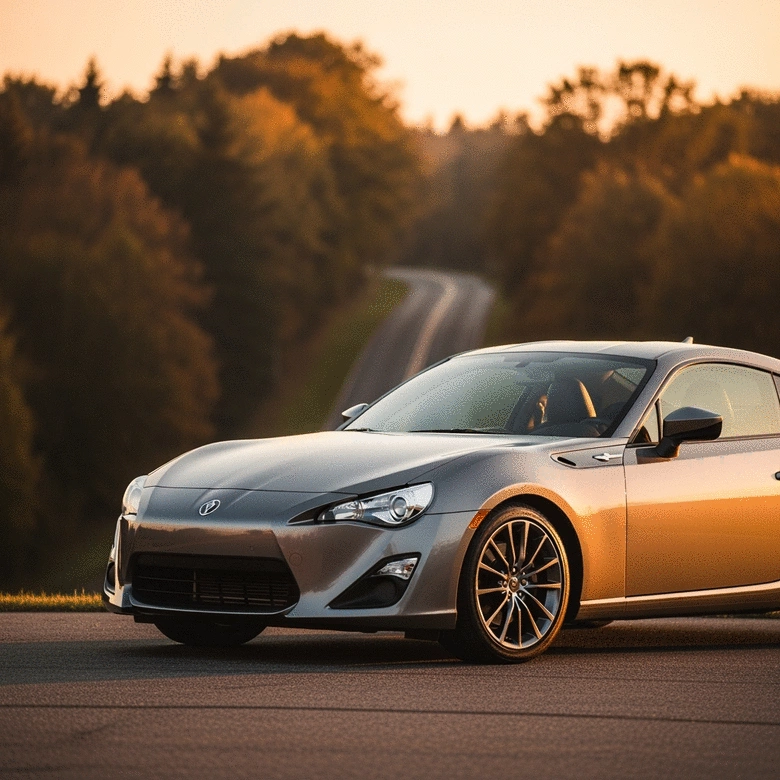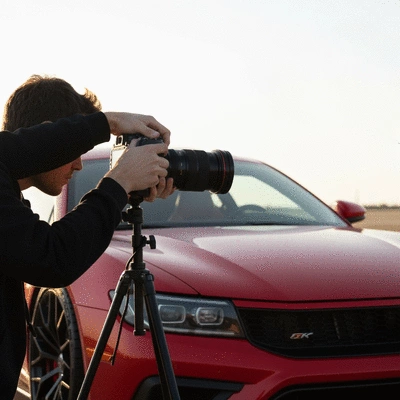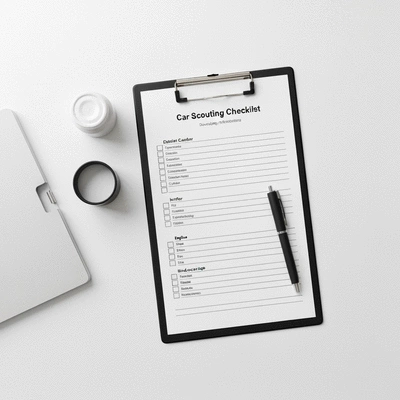Timing Considerations
- ✓Weather Conditions (Overcast vs. Sunny)
- ✓Time of Day (Golden Hour, Blue Hour)
- ✓Capturing Movement (Sense of speed)
The art of car photography is not merely about capturing a vehicle; it’s about harnessing the right elements to create a striking visual narrative. With this in mind, let’s unlock the secrets that can elevate your photography skills to the next level.
Timing and light are crucial in car photography. Below are the essential elements to consider and optimize for captivating images. For those looking to capture professional-looking car photos with minimal gear, explore our guide on how to master car photography with your iPhone.
When it comes to car photography, timing and light play crucial roles in capturing stunning images. You might be wondering why these elements are so important. Well, the right moment combined with the perfect lighting can turn an ordinary shot into a breathtaking masterpiece! In this section, we'll dive into how timing influences your photos and the best ways to utilize natural light.
Timing is everything in photography. This is especially true when it comes to capturing your car in its best light. A well-timed shot can reveal details that are often missed in average lighting conditions. Consider the following factors:
By paying attention to these aspects, you can ensure your car photos are not just good, but truly captivating. Timing could very well be the difference between a snapshot and a stunning image!
Natural light is a photographer's best friend! It can dramatically affect the mood and quality of your photos. Using natural light effectively means understanding its different qualities and how they impact your shots. Here's what to keep in mind:
Getting comfortable with how light interacts with different surfaces of your car will help elevate your photography. Remember, it’s not just about the car; it’s about how you can use light to tell a story! For more advanced techniques to enhance your photos, consider learning Lightroom tips for stunning car photos.
Have you ever heard of the "blue hour"? It’s that magical time right after sunset or before sunrise when the sky turns a deep shade of blue. This is one of my favorite times to shoot because it adds a unique atmosphere to car photos. Here’s why you should give it a try:
Embrace the blue hour in your car photography journey! It’s a fantastic opportunity to capture stunning images that stand out from the usual bright daylight shots.
To make the most of your car photography, consider investing in a simple reflector. A lightweight, portable reflector can bounce natural light onto your car, enhancing its features and eliminating harsh shadows. This technique is especially effective during bright sunny days when shadows can be particularly strong. Experiment with different angles to see how the light changes the mood of your shots!
Timing is crucial because the right moment combined with optimal lighting can transform an ordinary shot into a captivating image, revealing details and evoking a sense of mood or movement that might otherwise be missed.
Soft light (from overcast days or diffused sources) helps reduce harsh shadows and provides balanced illumination. Direct sunlight offers vibrant colors but can create strong, contrasting shadows. Understanding how to use both, along with reflections, adds depth and interest to your images.
The "blue hour" is the period just after sunset or before sunrise when the sky turns a deep shade of blue. It's beneficial because its cool tones add a dramatic effect, enhance contrast as daylight transitions to darkness, and often provides a less crowded environment for shooting.
You should focus on Aperture (use a wide aperture like f/2.8 for shallow depth of field), ISO (keep low in bright conditions, increase slowly as light fades), and Shutter Speed (adjust based on light intensity – faster for bright, slower for dim).
Weather can be used strategically: overcast days provide soft, diffused light; sunny days create vibrant images but require managing harsh shadows. Planning around seasonal variations like autumn foliage or winter light can add unique moods and backgrounds to your photos.
As we dive deeper into car photography, it’s essential to apply the knowledge we’ve gained about timing and light. This will not only enhance your skills but also help you capture those dreamy shots that make car enthusiasts stop and stare. To make this process easier, I've created a scouting checklist that you can refer to for your future photo outings!
This checklist can be a game-changer for both seasoned photographers and those just starting out. Remember, having a clear plan in mind will save you time and enhance your creativity when you're out in the field. To find the best backdrops, check out our guide on finding car photography spots easily.
Weather plays a significant role in car photography. Knowing how to integrate weather conditions into your planning can make or break your shoot. For instance, overcast days can provide soft, diffused light that reduces harsh shadows, while sunny days create vibrant and dynamic images. Here are a few tips:
By accounting for these variables, you can choose the right conditions that enhance your vehicle's features and set the mood of your photographs.
Adjusting your camera settings is crucial when faced with varying light conditions. I often remind fellow photographers to familiarize themselves with their equipment to make quick adjustments on the fly. Here are the key settings to focus on:
Understanding these settings will empower you to adapt quickly to changes in lighting, which is vital for capturing the perfect shot. Practice adjusting these settings in various situations, and soon, you’ll be able to do it without thinking twice! For more specific advice on car photography, particularly with mobile devices, don't miss our car photography tips for iPhone users.
Here is a quick recap of the important points discussed in the article:
At Everyday Car Photography, we empower car enthusiasts to capture stunning, professional-quality images of their vehicles using accessible and affordable methods.
Mobile-First Photography Tips


